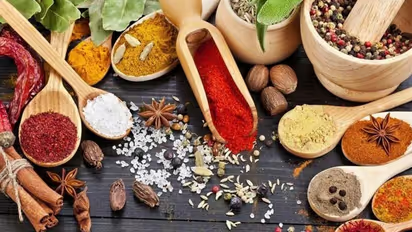5 Indian spices that rule kitchens across the world
Here are some spices that are adding flavour to modern European cuisines even today, all thanks to the British who got inspired by them.

Europe, in the Middle Ages, was enamoured with the East, which was exotic and alluring. And spices had a lot to do with it. The chase for spices did fan a lot of competition between the French, the English and the Dutch to gain control of trade and politics in the Indian Subcontinent.
It will not be an exaggeration to say that spices were one of the reasons that Europeans began colonising parts of India. Western cuisine mostly relies on pairing ingredients that share similar flavour compounds. On the other hand, what makes Indian food so flavourful is the practice of bringing together lots of different ingredients with completely different flavours.
Here are some spices that are adding flavour to modern European cuisines even today, all thanks to the British who got inspired by them:
Cumin: India is the main producer and consumer of cumin. It produces 70 per cent of the world supply. Cumin can be found in some cheeses, such as Leyden cheese, and in some traditional breads from France. Elite British restaurants use cumin to add warmth to slow-roast meats such as lamb and pork.
Cinnamon: While British dishes employ cinnamon in their interpretations of Indian dishes such as kebabs, the spice is mostly used to add flavour while baking or to flavour hot drinks such as coffee or hot chocolate. The warm sweet flavour makes it a popular ingredient in Western food, especially desserts.
Pepper: Pepper was indubitably the most prized spice and it remains so, even now, gracing tables as a seasoning and as an ingredient for entrees. Pepper was so valuable that it was often used as collateral or even currency. In the Dutch language, ‘pepper expensive’ (peperduur) is an expression for something very expensive. Today, pepper accounts for one-fifth of the world's spice trade. The Brits use it to churn out scones, balti meat, various hotpots and to flavour pork.
Turmeric: Starbucks serving our haldi wala doodh as turmeric latte is proof of how the world is waking up to the flavour of this golden spice. Turmeric has become popular in Western cultures. Much of its recent popularity is owed to the recent research that has highlighted its therapeutic properties, what Ayurveda has been saying for centuries. A component of curry powder, turmeric is used to make fish curries, dals, pilafs as well as in many modern European soups. Turmeric also gives chutneys and pickles (such as piccalilli) their distinctive yellow tinge, a slight peppery aroma and a musky taste.
Coriander Powder: While coriander has been used as an herb by British aristocracy, their 200 years in India exposed them to the humble coriander powder which could give that inimitable taste to curries. Garam masala in the UK cannot be made without coriander powder because it takes away the heat that locals have trouble with and yet gives Indian dishes that delightful aroma. In fact, some Belgian wheat beers are being brewed with coriander seeds. Coriander powder, made by powdering the roasted seeds of this herb, is being used in high-end eateries in London with orange peels to enhance the citrusy taste of desserts.